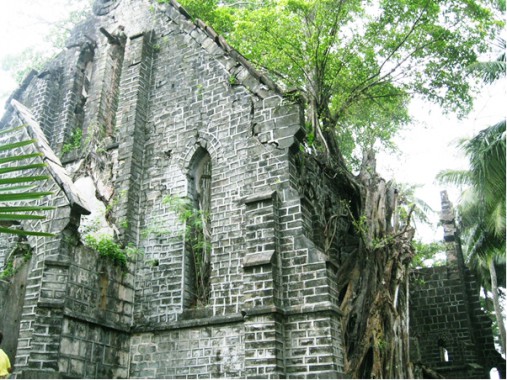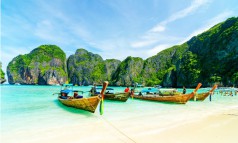




















Sunday, Dec 27, 2020 08:15 [IST]
Last Update: Sunday, Dec 27, 2020 02:35 [IST]
The first church established in Andamans was a Presbyterian Church in the late 1850s, or almost in 1860. Wait, before going into its history and its present status, let me first ogle, sorry, Google what is Presbyterian. ‘Presbyterianism is part of the reformed tradition within Protestantism which traces its origin to Scotland in specific. Presbyterian churches derive their name from the Presbyterian form of church government, i.e., run by representative assemblies of elders.’ Well, it seems all religions without exception have as many sects, sub-sects and intra sects as there are followers.
Named St. Andrew’s, this church was raised on Ross Island, a 70-acre small island just across and at the mouth of Port Blair (3 kms.). When the colonial British government decided to raise a penal settlement, the far off Andaman Islands was the appropriate choice. The first attempt in the 18th century did not succeed but the I War of Indian Independence (Sepoy Mutiny) in 1857 made the British rethink. Ross Island was chosen as the launch pad and it saw hectic activities – residential buildings for the British, office and commercial buildings, barracks for sepoys and thatched sheds for the convicts who not only transformed Ross Island but also built the massive Cellular Jail, the octopus like grim structure for imprisoning the freedom fighters/political prisoners. The cruel British of the Penal Settlement were also religious! Thus came up the Presbyterian Church on Ross Island, the administrative headquarters of Penal Settlement.
When exactly this church was completed is not known but one Rev. Henry Fisher Corbyn of the Bengal Ecclesiastical Establishment was sent to Andamans to set up proper full-time church services (1863-66). The structure was built of rock stone and its windows had wooden frames of Burma teak that withstood weather for over hundred years. The glass panes behind the altar had beautifully etched stained glass from Italy. On its southern side was a small accommodation for the parsonage. The church stood majestically at an elevated level with a tall tower to boot. The archival photo also shows iron grilled compound with glass lanterns. The interior had manually-operated punkahs (fans), a simple chandelier at the centre and lots of potted plants.
Ross Island continued to be the headquarters from 1858 and during II World War also; the Japanese, who had captured the Islands, maintained Ross Island as their headquarters. When the Islands were recaptured by the British during the course of II World War, only then did they shift their headquarters to Port Blair proper. Uncared since then, the buildings on Ross Island started falling apart with trees taking over. Only the façade of St. Andrew’s Church remains now, threatening to crumble down any day.
Though I lived in Andamans during 1978-80, Ross Island was then a closed and secretive place as Indian Navy had taken over it. Recently, however, realizing the tourism potential of the colonial ruins, Ross has been opened up for tourists but only till dusk; no night stay. I was able to visit Ross Island (or is it Ruin Island!) only in 2009, during my revisit. The ruins were amazing, resembling Angor Wat in Cambodia. I wondered if the ruins held the trees or vice versa!
St. Andrew’s Church, the first church of the British in the Andamans, now almost 160 years, stands amidst an eerie silent surrounding with no joyous celebration of X’mas.
( krishnanbala2004@yahoo.co.in / 9840917608 Whatsapp)
